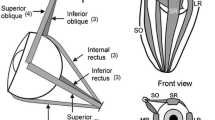Abstract
Studies estimating eye movements have demonstrated that non-human primates have fixation patterns similar to humans at the first sight of a picture. In the current study, three sets of pictures containing monkeys, humans or both were presented to rhesus monkeys and humans. The eye movements on these pictures by the two species were recorded using a Tobii eye-tracking system. We found that monkeys paid more attention to the head and body in pictures containing monkeys, whereas both monkeys and humans paid more attention to the head in pictures containing humans. The humans always concentrated on the eyes and head in all the pictures, indicating the social role of facial cues in society. Although humans paid more attention to the hands than monkeys, both monkeys and humans were interested in the hands and what was being done with them in the pictures. This may suggest the importance and necessity of hands for survival. Finally, monkeys scored lower in eye-tracking when fixating on the pictures, as if they were less interested in looking at the screen than humans. The locations of fixation in monkeys may provide insight into the role of eye movements in an evolutionary context.
Similar content being viewed by others
References
Flombaum JI, Junge JA, Hauser MD. Rhesus monkeys (Macaca mulatta) spontaneously compute addition operations over large numbers. Cognition 2005, 97: 315–325.
Proops L, McComb K, Reby D. Cross-modal individual recognition in domestic horses (Equus caballus). Proc Natl Acad Sci U S A 2009, 106: 947–951.
Sulkowski GM, Hauser MD. Can rhesus monkeys spontaneously subtract? Cognition 2001, 79: 239–262.
Hari R, Kujala MV. Brain basis of human social interaction: from concepts to brain imaging. Physiol Rew 2009, 89: 453–479.
Henderson JM, Williams CC, Falk RJ. Eye movements are functional during face learning. Mem Cogn 2005, 33: 98–106.
Janik S, Wellens A, Goldberg M, Dell’Osso L. Eyes as the center of focus in the visual examination of human faces. Percept Mot Skills 1978, 47: 857–858.
Laughery KR, Alexander JF, Lane AB. Recognition of human faces: Effects of target exposure time, target position, pose position, and type of photograph. J Appl Psychol 1971, 55: 477–483.
Luria SM, Strauss MS. Comparison of eye movements over faces in photographic positives and negatives. Perception 1978, 7: 349–358.
Itier RJ, Villate C, Ryan JD. Eyes always attract attention but gaze orienting is task-dependent: evidence from eye movement monitoring. Neuropsychologia 2007, 45: 1019–1028.
Schyns PG, Bonnar L, Gosselin F. Show me the features! Understanding recognition from the use of visual information. Psychol Sci 2002, 13: 402–409.
Schyns PG, Petro LS, Smith ML. Dynamics of visual information integration in the brain for categorizing facial expressions. Curr Biol 2007, 17: 1580–1585.
Keating CF, Keating EG. Visual scan patterns of rhesus monkeys viewing faces. Perception 1982, 11: 211–219.
Gothard KM, Erickson CA, Amaral DG. How do rhesus monkeys (Macaca mulatta) scan faces in a visual paired comparison task? Anim Cogn 2004, 7: 25–36.
Kano F, Tomonaga M. How chimpanzees look at pictures: a comparative eye-tracking study. Proc Biol Sci 2009, 276: 1949–1955.
Goh JO, Tan JC, Park DC. Culture modulates eyemovements to visual novelty. PLoS One 2009, 4: e8238.
Pouydebat E, Reghem E, Borel A, Gorce P. Diversity of grip in adults and young humans and chimpanzees (Pan troglodytes). Behav Brain Res 2011, 218: 21–28.
Hopkins WD, Leavens DA. Hand use and gestural communication in chimpanzees (Pan troglodytes). J Comp Psychol 1998, 112: 95–99.
Wang P, Nikolić D. An LCD monitor with sufficiently precise timing for research in vision. Front Hum Neurosci 2011, 5.
Thomsen CE. Eye contact by non-human primates toward a human observer. Anim Behav 1974, 22: 144–149.
Mendelson MJ, Haith MM, Goldmanrakic PS. Face scanning and responsiveness to social cues in infant rhesus monkeys. Dev Psychol 1982, 18: 222–228.
Trevarthen C. Facial expressions of emotion in mother-infant interaction. Hum Neurobiol 1985, 4: 21–32.
Dimberg U, Thunberg M, Elmehed K. Unconscious facial reactions to emotional facial expressions. Psychol Sci 2000, 11: 86–89.
Dellu F, Contarino A, Simon H, Koob GF, Gold LH. Genetic differences in response to novelty and spatial memory using a two-trial recognition task in mice. Neurobiol Learn Mem 2000, 73: 31–48.
Dellu F, Mayo W, Cherkaoui J, Le Moal M, Simon H. A twotrial memory task with automated recording: study in young and aged rats. Brain Res 1992, 588: 132–139.
Takarae Y, Minshew NJ, Luna B, Krisky CM, Sweeney JA. Pursuit eye movement deficits in autism. Brain 2004, 127: 2584–2594.
Kemner C, Verbaten MN, Cuperus JM, Camfferman G, van Engeland H. Abnormal saccadic eye movements in autistic children. J Autism Dev Disord 1998, 28: 61–67.
Pensiero S, Fabbro F, Michieletto P, Accardo A, Brambilla P. Saccadic characteristics in autistic children. Funct Neurol 2009, 24: 153–158.
Author information
Authors and Affiliations
Corresponding authors
Rights and permissions
About this article
Cite this article
Hu, YZ., Jiang, HH., Liu, CR. et al. What interests them in the pictures? — Differences in eyetracking between rhesus monkeys and humans. Neurosci. Bull. 29, 553–564 (2013). https://doi.org/10.1007/s12264-013-1367-2
Received:
Accepted:
Published:
Issue Date:
DOI: https://doi.org/10.1007/s12264-013-1367-2




